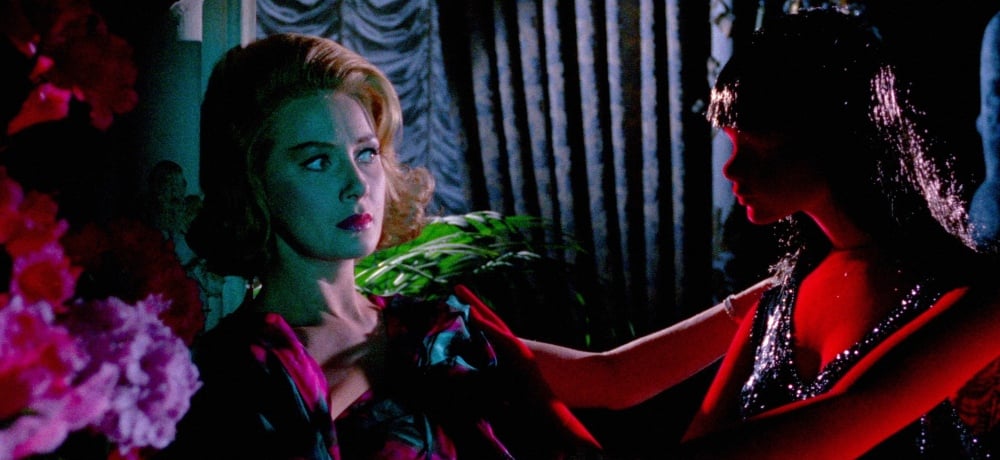


[This October is "Gialloween" on Daily Dead, as we celebrate the Halloween season by diving into the macabre mysteries, creepy kills, and eccentric characters found in some of our favorite giallo films! Keep checking back on Daily Dead this month for more retrospectives on classic, cult, and altogether unforgettable gialli, and visit our online hub to catch up on all of our Gialloween special features!]
Imagine you’re in a used bookstore. You peruse the worn spines and discolored pages and eventually your eye falls on a title that’s just a little dirty. The cover reveals one of those beautiful old pulp illustrations that you may have seen once or twice growing up. Flip the yellowed pages and the story is overdramatic and silly, but it’s sexy and you want to read more. That’s Giallo.
Giallo films are distinctive for their marriage of noir and slasher elements. Wrapped up in these spinetingling thrillers is a natural sort of eroticism and that instantly recognizable Italian style. Mario Bava’s Blood and Black Lace is often viewed as one of the purest examples of the subgenre and it’s easy to see why.
Blood and Black Lace begins with a beautiful fashion model walking the grounds of the fashion house that employs her, before she is attacked by a masked assailant. Her murderer drags her body across the lawn, in front of the foreboding façade of the fashion house, her stocking-clad legs exposed to the viewer. An investigation is launched to bring the young woman’s murderer to justice. A diary is found. Lies and scandals are revealed as the fashion house devolves into a web of deceit and lust. Everyone within the fashion house finds their life hopelessly tied to that of the dead girl… and her killer is still on the loose, stacking a pile of beautiful and scantily clad bodies in their wake.
While Blood and Black Lace did not launch the trend of the Giallo film, the film has been credited as being “first” in many things. The original title for the film was 6 Donne Per L’Assassino, or 6 Women for the Murderer, making Blood and Black Lace one of the earliest examples of the “body count” film. The action and mystery are wrapped up within the context of a violent slasher and the story is punctuated by each body added to the overall kill count. Considering that this type of horror really took off and became a horror staple in the 1980s, it’s a testament to Blood and Black Lace to be so ahead of its time.
That being said, the most interesting and enduring element of Blood and Black Lace is the connection of the film to horror’s long history of gender politics. Horror has been political for as long as horror has existed, and this pertains especially to discussions of society and gender. Horror reflects on what terrifies us, in a given cultural moment, and punishes those that do not adhere to the rules. Scream makes the classic argument for this and Blood and Black Lace begins the conversation.
It’s not by accident that Blood and Black Lace bases the horror in the world of women, specifically the world of women on display. A couture house is a distinctly feminine space, with an emphasis on female beauty and the display of the body. More pointedly, a fashion house represents women who are aware of their beauty and are able to make a career out of it.
In the film, the faceless killer is attacking these models one by one. Each kill is more inventive and savage than the last… with a particular focus. The masked murderer always disfigures the face of the victim.
The first death in the film is marked by savage scratches down the model’s cheek. A later death involves a strange spiked glove, driven straight through the model’s lovely features. One of the more brutal kills involves a model’s face being forced down on a white-hot surface, burning and disfiguring her. The investigator on the case is quick to identify the killer as a sex maniac, despite the fact that no sexual assault is in play with these killings. Blood and Black Lace forays into a bold exploration of misogyny—of a killer whose real target is female beauty and the power derived from it.
At the center of the mystery in Blood and Black Lace is the same narrative of a man trying to rob a woman of her power and agency. The killer is revealed to be a combined effort of Massimo Morlacchi, the manager of the salon, and Countess Cristiana, the owner of the fashion house and Massimo’s lover. Morlacchi and Cristiana had conspired to kill Cristiana’s husband and, as both seek to cover up the crime, the liabilities (and bodies) begin to pile high. But Morlacchi had another plan… he sought to drain Cristiana of all her money and power, under the guise of their secret love. The film ends with Cristiana recognizing the betrayal and shooting her dishonest lover.
When it comes to exploitation films, including Giallo films, the question of celebration versus, well, exploitation is present. In Blood and Black Lace, exploitation is given weight and meaning. The themes of sexuality and beauty are crucial to the film’s greater message, a commentary on women and sexual freedom in horror that is ahead of the curve. Blood and Black Lace is more than an exemplary entry of the Giallo subgenre, it set the pace for some of horror’s greatest cultural dialogues.
Blood and Black Lace is available to stream on Amazon Prime Video.
---------
Keep an eye on our online hub throughout October for more of our Gialloween retrospectives!